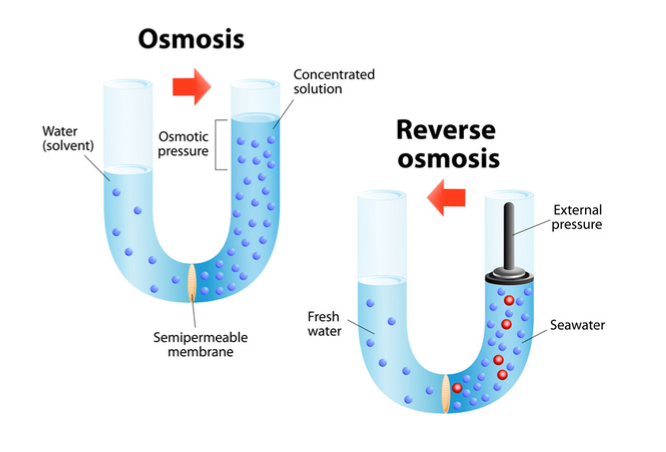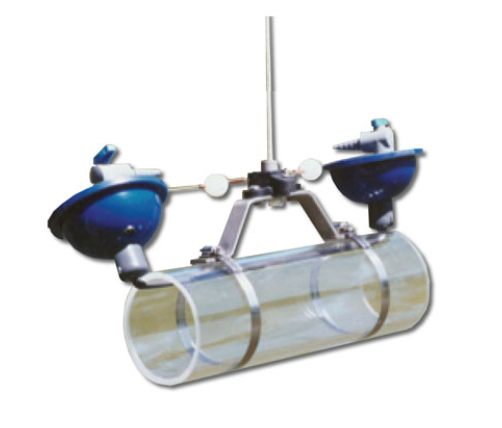- On average, water makes up approx. 55-78% of a person’s body mass
- Differs with sex, age, body weight, etc
- Essential for our body
- E.g., transports nutrients, excretion of waste, sweating to cool down
- Most abundant compound on the Earth’s surface
- 97.3% is saline
- 97.2% of this is in the ocean
- 2.7% is fresh water
- 68% of this is tied up in the polar ice caps and glaciers
- 0.6% of this is available of fresh water in rivers, lakes, swamps or groundwater
- Thus, only 1.62% of the world’s water is available as an accessible source
- 97.3% is saline
- Most water is not suitable for consumption
- Contains dissolved salts that would dehydrate us
- Contains dissolved substances substances, e.g. organic compounds, heavy metals, which may be toxic to our organs or carcenogenic
- Freshwater supplies may not be potable
- May contain suspended matter
- E.g. clay particles, pathogens/micro-organisms that cause diseases like cholera or dysentery
- May contain suspended matter
Potable Water
- Potable water: water that is safe to cook/drink
- Should be:
- Colourless
- Odourless
- Contain no pathogens or toxic substances
- Pleasant to taste
(how? water doesn’t have a taste)
- Should be:
- Total Dissolved Solids(TDS) should not exceed 600 mg per L, as per the National Health and Medical Research Council (NHMRC)
- Depending on the source of water, there are different ways of treating it
- The traditional source of water in WA is freshwater from rivers and dams
- Usually require only disinfection and fluoridation
- Due to increased demand and weather changes, groundwater is more significant, and recently, drinking water has even been taken from the Indian Ocean
- Water quality is essential due to its uses as drinking water, in agriculture and more
- This means we need to find ways to maintain the quality of water we access
- We need to purify our water so it is considered potable which can be done using various methods
- For this topic it is good to have an understanding of concentration
Contamination
- Water is a very effective solvent
- As a highly polar molecule, water is great at dissolving polar molecule substances and many ionic substances
- Water can form a range of intermolecular forces to stabilise a solution
- Dipole-dipole forces with polar molecules
- Hydrogen bonds with hydrogen bonding polar molecules
- Ion-dipole forces with ions from ionic compounds
- This can be a problem as water can be easily contaminated
- Both chemical and biological substances can contaminate water
Chemical Contaminants
- Chemical contaminants are the elements or compounds that can cause harm if consumed
- The main types of chemical contaminants are:
- Heavy metals
- Pollutants and fertiliser
- Organic pollutants
- The main sources of chemical contamination are:
- Run-off from farms and cities
- Run-off from industrial and mining wastes
- Lead used in solder in copper water pipes
Heavy Metal Contaminants
- Heavy metals typically have severe negative health effects
e.g. cancer, brain, organ and nervous system damage and death - Heavy metal contaminants are removed using precipitation reactions A solution containing an anion that will react with the heavy metal cation to produce a precipitate is added
- The precipitate is then filtered out of the water
Water Treatment
- Water treatment involves transforming sourced water into potable water It involves the removal of contaminants from the water
- Depending on the source water was acquired from, it must be treated differently to purify it
- Here we’ll look at how different sources of water are treated
- The main sources for drinkable water are:
- Reservoirs filled by run-off from rivers and streams Water directly from rivers and lakes
- Groundwater
- Recycled water
- Desalinated seawater
General Water Treatment
- Treatment can vary from city to city but the aim of purification is to remove suspended solids, pathogens, colour and odour from the water
- General water treatment includes four steps:
- Flocculation
- Settling or Sedimentation
- Filtration
- Chlorination
- The water may also undergo fluoridation (covered below)
Flocculation
- Process where small suspended particles in the water are made to join together to form larger, heavier particles
- These heavier particles sink to the bottom of the water sample
- Flocculation is achieved by adding alum () and, if necessary, lime ()
- is a gelatinous precipitate known as floc that is produced from the addition of alum
- This floc traps finer particles, and can remove colour/microorganisms from water, as they are absorbed
Settling or Sedimentation
- Suspended solids are removed using gravity
- The floc from before settles at the bottom as a sludge and is removed
Filtration
- The water is filtered to remove any remaining suspended matter
- Filtration occurs though a filter bed of sand (or granulated charcoal) over gravel
Chlorination
- The water is treated with chlorine gas to kill pathogens
Seawater Treatment
- Distillation and reverse-osmosis are two approaches typically used to treat seawater
- In distillation, pure water is evaporated from seawater Reverse-osmosis is the process of movement of solvent through a semipermeable membrane from the solution to the pure solvent
- Pure water is pushed by high pressure through the barrier leaving the solute on the other side
- The substance that goes through the barrier is called the permeate
- The fresh water is the permeate

- The fresh water is the permeate
Groundwater Treatment
Aeration
- Groundwater often contains unwanted dissolved gases
- Aeration removes these gases
- Oxygen from the air is also incorporated into the water which helps remove dissolved organic compounds
- Quite literally spraying the water into the air
Clarification
- Clarification removes suspended fine particles
- Alum and lime are added to the groundwater
- Alum causes the particles to clump together and settle out
- Alum is a coagulant or flocculating agent
Sand Filtration
- Water is passed through filter beds
- Filter beds are made of granulated anthracite and coarse sand
- Anthracite is very effective at adsorbing organic materials
- Anthracite: Coal of a hard variety that contains relatively pure carbon and burns with little flame and smoke.
Disinfection
- Pathogens may still be present in the groundwater and need to be removed
- Chlorination or chloramination is used to disinfect the water
- Chloramination: Chlorine and Water
Fluoridation
- Fluoride ions in water boost tooth health, therefore a certain level of fluoride ions are maintained in the water
- Fluoridation is the process of adjusting the level fluoride ions to the optimal ()
pH
- Water must be in a certain range for pH level (6.5 - 8.5)
- The pH of the water is corrected by lowering or raising the pH
- Lime (CaO) increases pH
- Carbon dioxide lowers pH
Water Monitoring
- Water monitoring tests several properties:
- e.g. pH, total dissolved solids, turbidity, bacterial and viral pathogens, heavy metals, etc.
- There are guidelines for the level/concentration that things are allowed to be at for the water to be considered safe
- The guidelines in Australia are set by the National Health and Medical Research Council (NHMRC)
- Groundwater typically contains heavy metals e.g. iron, aluminium and arsenic
Water Sampling
- There are several protocols for water sampling:
- The container can be rinsed with the sample before the final sample is taken
- The container should be cleaned before taking another sample
- The water used for cleaning the container can be tested to ensure there is no contamination between samples
- If pathogens are being tested for, the container should be sterile
Sampling Locations
It is important to take samples from multiple locations for large bodies of water. The samples should be taken at the same depth and at a similar time to each other.
Sampling Depths
- When taking a sample, the depth the sample is taken from in the water body is decided by the temperature of the sample
- If the water body has consistent temperature, the sample is taken from the middle of the water body (half depth)
- If the water body has varying temperature, a sample is taken from the middle of each temperature region
Van Dorn Sampler
- A Van Dorn sampler can be used if the water being sampled is more than 2 metres deep or samples at different depths are required.
- Van Dorn samplers descend parallel to the bottom.
